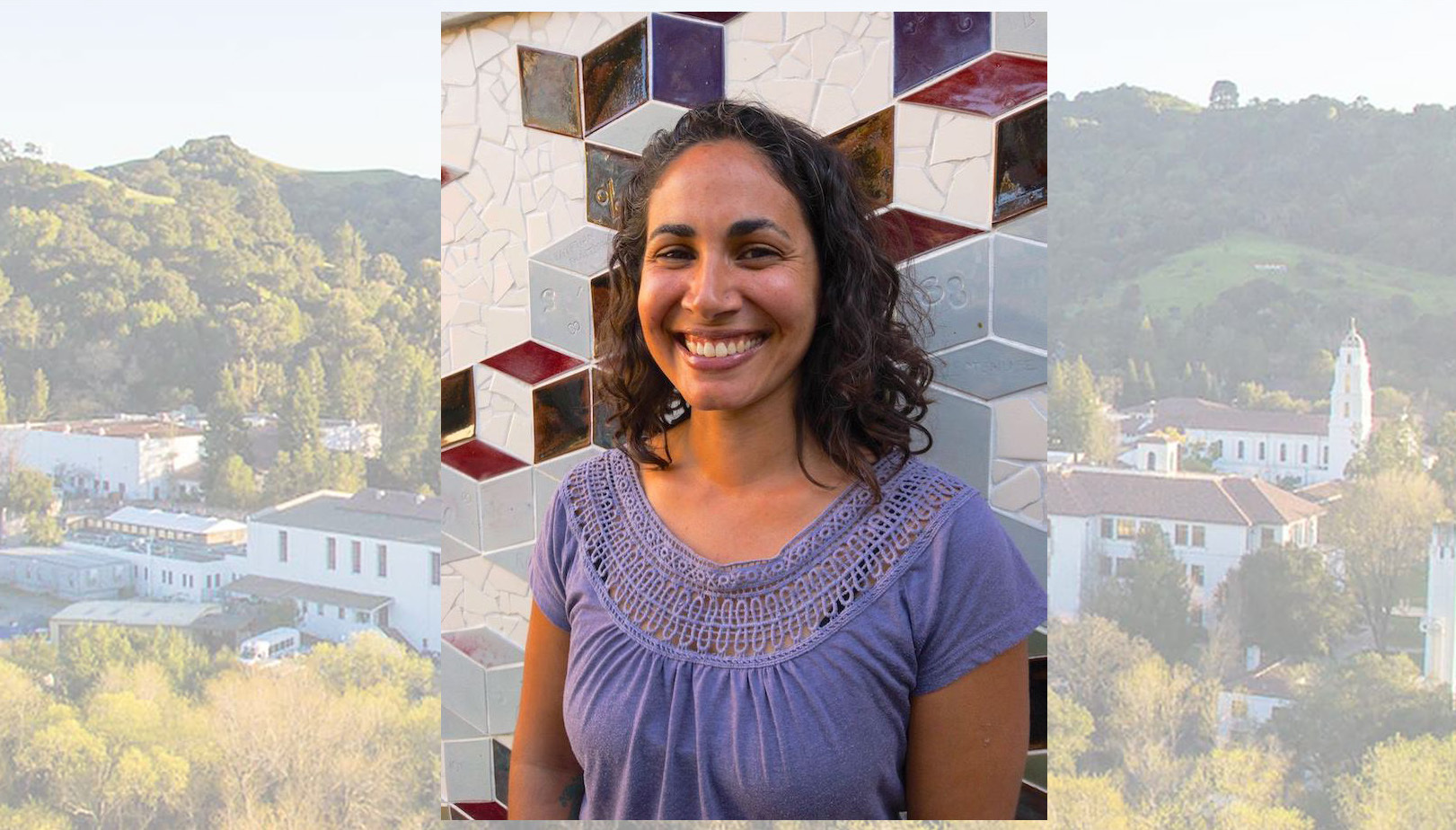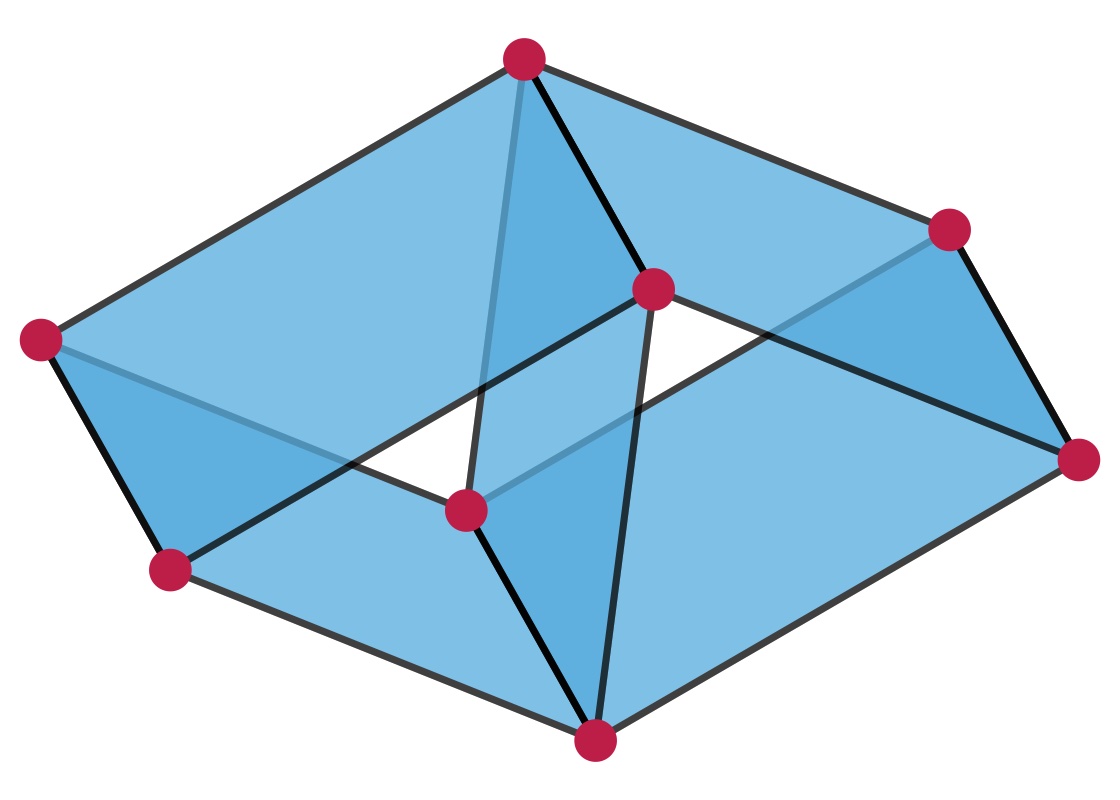
Anastasia Chavez's advice to future first-gen mathematicians: “Find your community...If you can find folks you get along with and do math together—that’s the best.” / Photo courtesy Anastasia Chavez
In Their Own Words: Mathematician Anastasia Chavez on the PRIMES Grant, Her First-Gen Journey, and the Joy of ‘Unknowing’
The National Science Foundation grant supports research at minority-serving institutions. For Chavez, it allows her to puzzle with matroids, build relationships with students, and continue disrupting the narrative of “who does math.”
In Their Own Words is a series in which we introduce you to the Gaels you need to meet—students, alums, faculty, and staff—and let them tell their stories, in their own words.
Meet Anastasia Chavez, an assistant professor in the Mathematics & Computer Science Department and recent recipient of a PRIMES Grant. Awarded by the National Science Foundation (NSF), the $300,000 grant will advance her research into matroid theory (more on that in a bit!), promote mathematics research by SMC undergraduates, and formalize a partnership between Saint Mary’s and the Institute for Pure and Applied Mathematics.
Making family history
I'm from Santa Rosa, California, born and raised. Neither of my parents went to college; my mom worked for the state for almost 30 years, doing clerical stuff, and my dad has been in construction since I was a baby. College wasn’t really part of the equation. But my senior year of high school, someone came in to present about Santa Rosa Junior College. I decided to apply, not really understanding what that would entail. Oftentimes, people at my high school just sort of graduated and floated around. But my GPA was high enough that I earned a scholarship, so I went for it. It felt like the right thing to do.
An unexpected turn
In junior college, I thought I wanted to become a writer. I tested into calculus, though, and ended up taking a number of math classes. When I sat down with my counselor to transfer to San Francisco State University and told him I wanted to be a journalism major, he looked at my transcript and said, “You’ve taken all these math classes, and you’ve done pretty well. You could really do anything with math.” So on the counselor’s recommendation, I majored in math at SF State.
Knowing + Unknowing = Math
I had landed on a path that wasn’t my own design. During my undergraduate years, I had a real love-hate relationship with math; I think most people do. You struggle and struggle, and sometimes you wonder if it’s too much struggle, because it seems like people around you aren’t struggling as hard. But then there’s that moment where the light bulb goes off, and you somehow forget how hard it all was. You think, “Oh, I want to do that again.” That was how the cycle went: spending so much time in the unknowing—sometimes fun, often not, usually uncomfortable—hoping to get a few seconds of knowing.
Chavez is proud to work at a Hispanic Serving Institution like Saint Mary’s, she says: “I want to disrupt the stereotype that keeps so many Black and Brown students from feeling capable, confident, and welcomed into the math community.”
The road to professorship
At the end of undergrad, I was at a crossroads. My husband and I had gotten pregnant unexpectedly, and so I had to decide whether to stay in school or not. Around this time, I was accepted to the SF State master’s program and received the NSF’s LSAMP Bridge to the Doctorate Fellowship, which supports minority students planning to get their PhD in STEM. Once again, another opportunity that paid for me to stay in school and keep studying. How could I say no to that?
For my master’s thesis at SF State, I researched these high-dimensional objects called polytopes. Imagine taking three-dimensional shapes—pyramids, cubes—into the fourth dimension, or the 100th, or whatever you can imagine. Those are polytopes. Studying them really spurred my interest in combinatorics, which I pursued more during my PhD at Berkeley. I’ve always been drawn to working with structures rather than just the theory. With combinatorics—and specifically matroid theory—it felt like moving puzzle pieces around, which is what got me into math in the first place. I just had a lot of fun.
Why matroids matter
When I think of matroid theory, I think of it as an area of mathematics that captures the essence of how things work. Let’s say you have a bunch of dots and edges that connect them—a graph, essentially, on a piece of paper. And let’s say you also have a bunch of arrows and space that you combine to create a three-dimensional space. Those things should require two very different languages. But with matroid theory, I can describe both things using one language. I can show you they’re talking about the same thing.
That’s what I love about matroid theory: It reveals common ground where you’d never expect it. It doesn't feel like physics and computer visualization should be related, for instance. But matroids help you see that they are! Those surprises are what keep me excited. They make me want to find new connections, because matroids continue to show us what’s possible.
Reframing the equation for the next generation
Working at a Hispanic Serving Institution like Saint Mary’s is something I feel incredibly proud of and grateful for. All throughout grade school and college, it was rare for me to see teachers and faculty of color, especially Latinx folx. Early in my career, I realized I wanted to fill that void in math and academic communities by becoming a professor myself.
I also wanted to provide a different perspective on the narrative of “who does math.” That is, I want to disrupt the stereotype that keeps so many Black and Brown students from feeling capable, confident, and welcomed into the math community. At Saint Mary’s, I’m blessed to be able to work with a widely diverse group of students, supporting their growth as the next generation of forward-thinking, mathematically confident individuals.

What the NSF PRIMES Grant means for her and SMC
The two-year grant is meant to support faculty at minority-serving institutions. What that looks like for me: I’ll be supported for a year of academic leave, when I’ll go down to the Institute for Pure and Applied Mathematics at the UCLA campus and continue to study matroid theory. Then, the following year, I’ll return to Saint Mary’s to teach and continue to build up a research group in our department. I’ll also have funding to support student researchers for both years, during the Summer Research Program and beyond.
Ultimately, the grant is a great opportunity for Saint Mary’s students to see that mathematical research is something that’s out there, available to them, and can be done.
Her advice to future first-gen mathematicians
If it’s something you like, don't try to talk yourself out of it. Just enjoy it and look for the things that make you happy. And find your community. I always tell my students, “I’d rather do math with people than by myself.” If you can find folks you get along with and do math together—that’s the best.
(This interview has been condensed and edited for clarity.)
DISCOVER a wide range of hands-on opportunities through the Summer Research Program. Applications open in Spring 2024.
READ MORE: Best in the West: Saint Mary’s Maintains No. 4 Ranking in Top Universities
Hayden Royster is Staff Writer at the Office of Marketing and Communications for Saint Mary's College. Write him.